6 Make Your Content Effective
Does your content work for your customers?
I LEARNED EARLY IN SPORTS THAT TO BE EFFECTIVE—FOR A PLAYER TO PLAY THE BEST HE CAN PLAY—IS A MATTER OF CONCENTRATION AND BEING UNAWARE OF DISTRACTIONS, POSITIVE OR NEGATIVE.
—Tom Landry
STAY ON TARGET.
—Gold Five, Star Wars
If you read the first edition of this book, you know that I’m fascinated by persuasion and its related fields, including psychology, communication, and rhetoric. (If you didn’t, now you know!) This fascination stems from the many, many times in my life where I felt I failed to persuade, and the few times I felt I was successful.
One of those few early times in my life occurred in fifth grade. My teacher, Mrs. Hoerter, had a point system to encourage positive behavior. If she gave you points on a particular day, you felt as if you’d conquered the world. Five additional points was the max, and the words “plus five!” were magic to my and my classmates’ ears. If she neither gave nor took away points, that was normal. If she took away points, especially five points, that was devastating. To be honest, I don’t even remember what we could do with the points. But I remember I really wanted to gain points and never lose them.
So one day I was working on an assignment, and a few classmates nearby got into a bit of an argument. They started to raise their voices. Big mistake. Mrs. Hoerter, who was working with students on the other side of the room, looked in our direction and said loudly “minus five!” Horrors! I consoled myself by thinking that Mrs. Hoerter knew I wasn’t part of the commotion and didn’t mean me. But that afternoon I looked at my point chart and saw in black ink the dreaded minus 5. What to do!?
I immediately thought about our recent English lesson, where we learned about writing a persuasive essay. And I decided the next day to write Mrs. Hoerter a letter explaining why I did not deserve the dreaded minus five, trying to use techniques from the lesson, such as giving three reasons and explaining them clearly. Before I left the room for the afternoon school bus, I put the letter in an envelope I had brought from home and then left the envelope on Mrs. Hoerter’s chair. The next morning I walked to my desk, and lo and behold, an envelope with my name in Mrs. Hoerter’s handwriting was waiting. I nervously opened it, and to my great relief, she had agreed to restore those five points. That English lesson worked!
So it’s safe to say that when I explore persuasion I indulge in some “me-search.” The good news for you is that in my quest to learn more about persuasion, I have accumulated a variety of facts, principles, and examples that you might find useful. In this chapter, we address the essentials to make content effective. It’s tough to be influential through content without these essentials.
An Overview of Content Effectiveness
I consider the dimensions identified in Table 6.1 and mentioned in Chapter 4 to be essential to effective content.
Table 6.1 Dimensions of Content Effectiveness
DIMENSION |
DESCRIPTION |
|---|---|
Discoverability/Findability |
The content is easy for customers to find and consume. |
Polish |
Customers perceive the content format and style as appropriately polished. |
Accuracy |
Customers perceive the content as correct or up to date. |
Usefulness |
Customers perceive the content as useful or helpful. |
Relevance/Meaning |
Customers perceive the content as relevant or meaningful. |
In the case of my fifth-grade letter, I made it easy for Mrs. Hoerter to find by placing it on her chair. My letter was not a slick brochure or video, but it was much more polished than, say, yelling or crying. I made a painstaking effort to state the facts accurately, not exaggerate them. I wrote the letter soon after the dreaded minus five happened, so the letter was highly relevant. And I tried to lay out the information Mrs. Hoerter would need to make the decision whether to restore those five precious points. Without these essentials in place, I likely would not have had the opportunity to influence my teacher. In a similar way, your company will have a tough time earning the opportunity to influence your customers without making your content effective.
Are all of these dimensions of content effectiveness really necessary? I’ve wondered that myself. Luckily, the Content Science team has some data to help us get answers—data collected by our ContentWRX software from more than 100,000 content users about these dimensions of content effectiveness. We analyzed this data to explore the relationship between the dimensions and not only confirmed their importance but also learned more about why they’re important. Let’s walk through the dimensions in more detail.
Discoverability/Findability
Make your content easy for customers to find and consume—in both reality and perception.
Why it Matters
The obvious reason why discoverability and findability matter is that if customers can’t find your content, it might as well not exist. Today, making your organization’s content easy to find or discover usually takes work, thanks in part to the amount of content and data on the internet doubling roughly every five years.
A not-so-obvious reason? Our research using the ContentWRX data revealed a surprising impact of content findability. If your customers have difficulty finding your content, that experience distorts their perspective on the content itself. Let’s look at some proof. In Figure 6.1, you can see that people who reported that content was easy to find were significantly more likely to report that it was accurate, relevant, and useful than were people who experienced difficulty (but eventually found the content they needed).
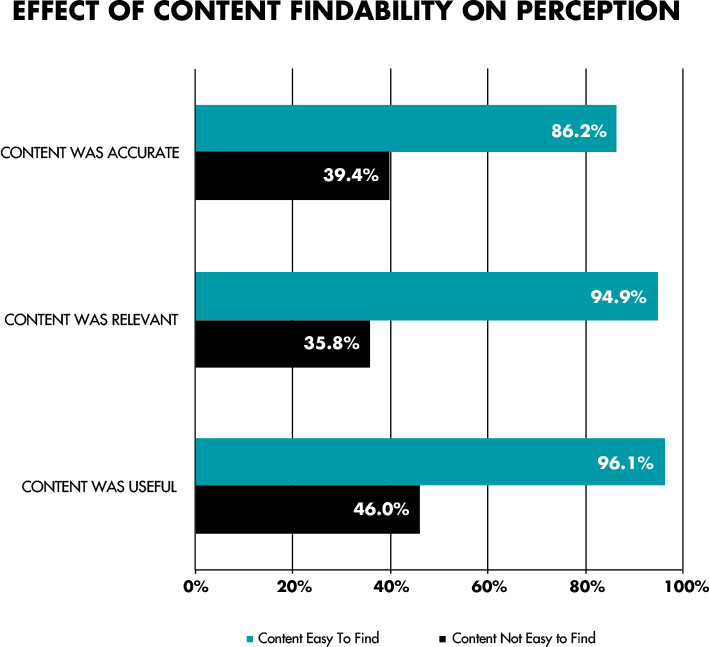
Figure 6.1: People perceive content that is hard to find (but eventually found) as less accurate, relevant, and useful than easy-to-find content
Another way of looking at this insight is that if your customers had trouble finding your content but eventually did, they are
Less than half as likely to view that content as accurate
Nearly one-third as likely to view that content as relevant
Less than half as likely to perceive that content as helpful to accomplishing their goal
You could offer the most amazing content ever produced, but it will not matter if customers experience difficulty finding it. Content findability is the first impression you make on your customers, and the stakes for that impression are very high. I regret I have experienced this phenomenon first hand. Last year, my company launched an online academy. (Creatively named Content Science Academy.) In our eagerness to share the academy with the world, we allowed people to sign up for a few experimental courses that were in a format not quite ready for primetime. Consequently, customers had difficulty accessing and using the experimental courses and complained. But even though the course material was well received in other training formats, these customers also criticized the material. Ouch. The bad first impression of difficult-to-access course material distorted our customers’ perceptions of the material and the rest of the experience. Instead of winning over fans for our innovative new academy, we discouraged them from using it again.
How can you avoid my mistake and connect your customers with your content? Let’s turn to a few tips.
Top Tips
It’s time to modernize your company’s approach to content findability with a mix of new thinking and old-hat best practices.
Bring the Content to the Customer Through Personalization
Is it realistic to always put the burden on your customers, users, or audiences to find your content? When your customers get to your website, mobile application, or other digital touchpoint, are they really willing to wade through multiple levels of navigation or a set of search filters and settings so complex they look like a control center in a spaceship? Start thinking about how your company can take on the burden of connecting your customers with the right content. One of the most effective ways to do so is to embrace personalization.
Whenever I speak about personalization at a conference or corporate training, I ask attendees to name a great example. Amazon is usually on the tip of their tongues. It’s not hard to understand why, with the many ways Amazon connects customers to the most pertinent products possible. In a similar spirit, think about how to Amazon-ify your content, such as
Proactively offering your customers suggested content or information immediately when they visit your site
Showing your customers or users which content that people with similar interests or needs found useful
Giving your customers suggestions for content similar to the content they just consumed
Reminding or alerting customers of important decisions, tasks, and more
Customizing offers or messages based on your customers’ interests or status
Planning microcopy and contextual help to guide customers in the moment rather than making them search for instructions
You can bring the content when users expect or demand it… or when it will surprise and delight them. Take the Weather Channel, for example. When a hurricane, a snowstorm, or other extreme weather looms, people check the Weather Channel website and mobile application. What about sunny days? Not so much. So the Weather Channel decided to delight and engage their mobile application users by delivering clever, personalized content for more types of weather and for weather holidays, like the countdown to an eclipse. The result? Content strategist Lindsey Howard notes
Since launching, we increased performance in double digits across all priority metrics, including visits per user, sponsorship traffic, total impressions, and retention. This is particularly significant in an app world where every percentage point counts. International engagement, a key factor in global relevance and expansion, skyrocketed. A priority metric for content strategy, click-through rate, went up 23 percent in less than three months.1
Personalizing content delivery requires content intelligence as well as content engineering. We’ll talk more about what these disciplines are and how you can take advantage of them in Sections IV and V.
Apply Solid Web Search Engine and Social Media Optimization Best Practices
I don’t mean the SEO snake oil mentioned in Chapter 1. I mean tried-and-true practices that will help search engines, such as Google and the search engines on your website or mobile app, retrieve the right content. These practices are my top picks:
Focus on topics your customers care about.
When possible, don’t focus on exactly the same topics as your competitors. Tools such as Google AdWords and Moz can help you assess your options.
Use the topic and topic phrases in page names, asset names, metadata descriptions, and text content.
Use a tool such as Moz or a search engine optimization plug-in to help automate and check search engine optimization (Drupal and WordPress have several, for example).
For web pages, specify an image that will display when the page is shared on social media. Adjusting your web page administration template or adding a plug-in can enable this feature if you do not already have it.
Start Engineering Your Content for Retrieval by Voice Interfaces, ChatBots, and Similar Emerging Touchpoints
The future is quickly becoming now. We’ll talk more about this content engineering in Sections V and VI.
Archive Outdated and Underperforming Content
This best practice in content maintenance is more important than ever. And too many companies and organizations are still not following it. So it bears repeating: Get rid of outdated and underperforming content. Doing so is now critical to making the rest of your organization’s content findable. Let me explain.
If your company continues to clog its digital presence with content that no longer works, your company
Reduces the chances that your customers will discover the most appropriate content. You’re making your customers look for a needle in a haystack.
Risks that you will cannibalize the search engine optimization of your new or current content with outdated content about similar topics.
I encourage you to view maintaining current content as a must-happen best practice, or your company’s investment in content will not matter. It’s like trying to improve your health with a fancy gym, expensive personal trainer, and nifty equipment—without trimming excessive junk food from your diet. The junk food habit undermines the hard work you do at the gym, not to mention that it wastes your time and money.
If maintaining content does not sound particularly easy or fun to you, you are not alone. But in Sections IV and V, we’ll talk more about how establishing and even automating good content habits in your content operations can help.
Let’s move on to two more dimensions of content effectiveness, polish and accuracy.
Polish and Accuracy
Offer up-to-date and correct content at an appropriate level of polish or production quality.
Why it Matters
In the same study of ContentWRX data, we discovered that if people perceive content as accurate and polished, they are significantly more likely to perceive it as relevant and useful. If your customers are not confident in your facts, wonder whether your information is current, or trip over frequent typos or display glitches, they will have difficulty taking your content seriously. Even worse, your customers will have trouble meeting their goals. Figure 6.2 shows that people who perceive content as accurate are five times as likely to report completing their goals as people who do not and are twice as likely to report completing their goals as people who are not sure of the accuracy.
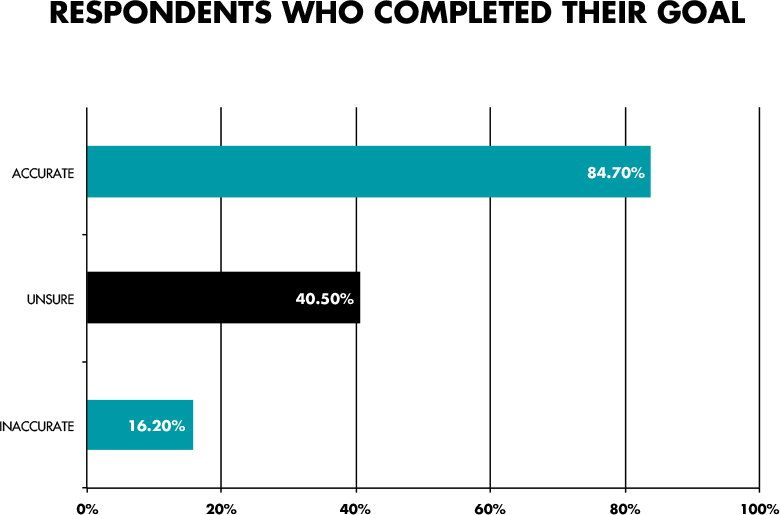
Figure 6.2: The effect of accurate content on visitors completing their goals
Offering polished and clearly accurate content is not as easy as it sounds. So let’s turn to a few tips that can help you sustain accurate and polished content.
Top Tips
These tips help address the reality of your content’s accuracy and polish as well as your customers’ perceptions.
Archive or Update Outdated Content
Yes, we did just discuss outdated content as a findability problem. It’s also an accuracy problem. If your company doesn’t archive or update outdated content, then your company will not only experience findability problems but also risk the following:
Your customers mistakenly using content that is inaccurate, which can lead to confusion, unrealistic expectations, and serious errors—all of which can lead to returned purchases, customer churn, lawsuits, and lost trust.
Looking like one of those organizations that doesn’t care. The outdated content might not cause a major disaster, but it immediately undermines your customers’ confidence and trust in you. If you can’t keep your content current, why should customers believe you can handle their business or advise them on high-stakes topics such as health?
Let’s look at an example in AutoTrader. This bumblebee Camaro classified ad (Figure 6.3) graced the internet in 2011, so it is full of now-outdated references, such as the Transformers movie. More importantly, this Camaro is no longer really for sale. This ancient classified ad is customer frustration waiting to happen, not to mention a turnoff for potential readers of AutoTrader editorial content.

Figure 6.3: This outdated content risks confusing readers and potential customers.
Give Customers Strong Cues That Content Is Accurate
Don’t be shy about letting your customers know that the content is current and grounded in facts or evidence. If your customers do not perceive your content as accurate, it might as well not be. A few ways to give your customers confidence include
Providing dates that the content was published, reviewed, or updated
Specifying clearly the product or plan version discussed in the content
Citing and potentially linking to credible sources of facts or statistics
Specifying how long the content, such as recommendations or guidelines or warnings, applies
Ensuring that links to more or supporting information are current
The guiding principle here is to tell people that your content is accurate and why.
Ensure the Content Is Usable and Accessible in the Right Channels or Touchpoints
The minimum level of polish your content must have is usability. Web content must be layered, chunked, and labeled, for example. Videos must have transcripts or closed captioning. Fortunately, several resources already cover this ground well.
Letting Go of the Words by Ginny Redish
Don’t Make Me Think by Steve Krug
Rocket Surgery Made Easy by Steve Krug
User Interface Engineering library and training events
Nielsen Norman Group articles and training events
Content Design courses run by Content Science Academy
Produce Less Content at Higher Production Quality—with Some Exceptions
Content polish might seem like a no-brainer, but it can be complicated. Content with more polish takes more time and resources to produce. Usually, I lean toward creating less content at a higher quality. Instead of cranking out mediocre company blog posts twice a week, for example, create an online magazine with a less frequent publishing cadence. Outdoor outfitter REI, for example, has elevated its content production to the point of creating award-nominated documentaries (Figure 6.4).
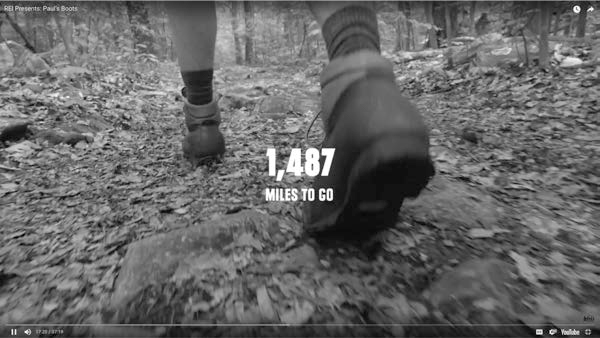
Figure 6.4: REI produces award-nominated documentaries.
A few important exceptions to this rule exist. Sometimes, quick and accurate content trumps polished content.
Social media and engagement. In the context of social media, people have a higher tolerance for lower production quality. Grandparents, for example, are delighted to see pictures of their children playing soccer while the game is happening, even if the pictures are not perfect. In a similar way, your customers might find pictures from your company event more compelling if you share them while the event is happening instead of waiting to select and touch up the shots.
Emergencies or crises. Timely, accurate content on your website, social media, and other touchpoints is much more important than polish.
Usefulness and Relevance/Meaning
Offer content that your customers find useful and meaningful to their goals.
Why it Matters
In mining our ContentWRX data, we found that relevant content makes or breaks goal completion (Figure 6.5). If your content is relevant to your customers, they will be much more likely to make decisions or complete tasks.
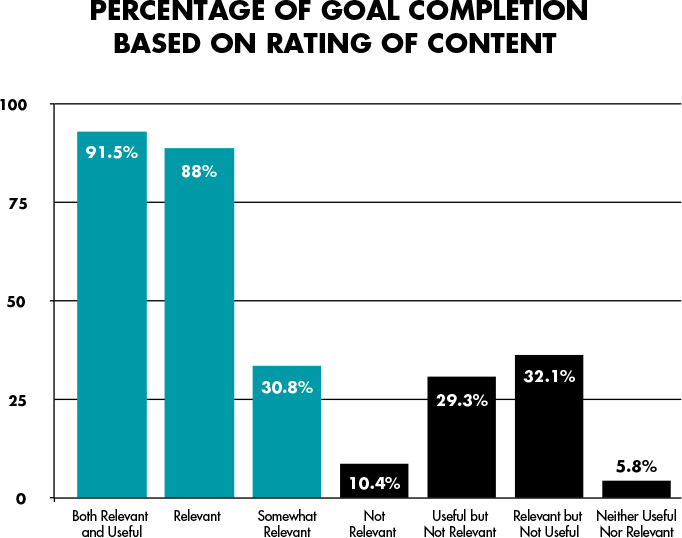
Figure 6.5: The effect of content rating on completing a goal
Additionally, if your customers view your content as both useful and relevant, they will be much more likely to view it as effective. The analysis of our ContentWRX data found that overall effectiveness scores (or what we call ContentWRX scores) were highest when people perceived content as both useful and relevant (Figure 6.6).
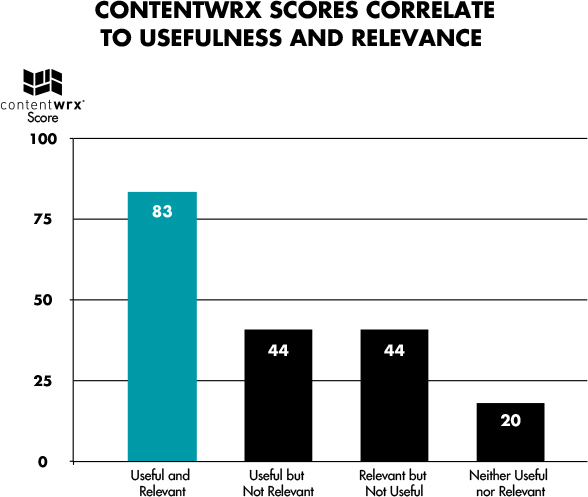
Figure 6.6: The effect of content usefulness and relevance on content scores
So how do you make content useful and relevant, both in reality and in the hearts and minds of your customers? Let’s review a few key tips.
Top Tips
These tips help address the reality of your content’s usefulness and relevance/meaning.
Align Content Creation with Customer Personas and Journeys
The customer personas and journeys we discussed in Chapter 4 will be your go-to tools as you or your team create content. Review that information and ask yourself or your team
Which customer persona or segment is this content for?
At what stage or step in their journeys will customers use this content?
How can this content answer the questions customers have?
How can this content show sensitivity to customer emotions?
How can this content help a customer make a decision or complete a task?
How can this content help a customer get to the next stage or step in the journey?
Specify the Content Audience in the Content Itself
Your customers are busy, so don’t make them waste time guessing who the content is for. Tell them. For example, Harvard Business Review proudly states it’s the world’s most influential management magazine. TD Ameritrade’s thinkMoney says it’s for “active traders.” American Express Open Forum is not shy about saying it’s for small businesses, especially small business owners. This practice not only will help clarify when content is relevant but also make it easier for customers to find.
This practice applies to a wide range of content, not just digital magazines. Sales content might require a version for business decision-makers and a version for technical experts, stakeholders, or decision-makers. Customer service and support content might require different versions for different roles or levels of expertise. In all those cases, stating who the intended audience is will help your customers know whether the content is pertinent.
State the Usefulness or Relevance in the Content Itself
Similar to specifying the content audience, don’t make customers guess why the content is useful or relevant. Say it proudly. One technique I find helpful is to imagine your customers asking you, “So what?” Provide the answer immediately in the content. REI uses this technique in its advice and guidance content. The beginning of an article titled “Bike Suspension Basics” says
Bike suspension provides improved control, traction, and comfort on rooty, rocky single-track or potholed roads. It is one of many factors that contribute to your riding enjoyment.
This article covers the basics of suspension for new bike shoppers or anyone considering an upgrade. We then go on to provide a more detailed look at how suspension works.
And, it doesn’t hurt to remind customers of the usefulness or relevance if the content is lengthy or requires deep interaction.
Check Whether You’re Meeting the Needs of Advanced, Expert, or Specific Customers
If people report that content is not useful or relevant in ContentWRX, we ask why. The most common reason? Content is too general or basic (Figure 6.7). The least common reason? Content is too detailed or advanced.
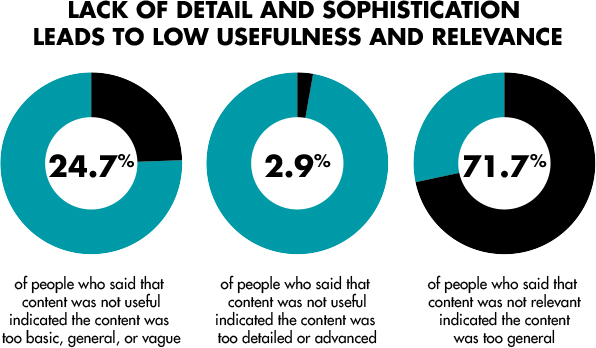
Figure 6.7: The effect of content that is too general
Consider whether you are repeating the same basic, high-level information again and again or tailoring content to the needs of important or high-value customers. For example, we worked with a credit monitoring company to develop a content strategy for consumers in a post-Equifax data breach world. We discovered that the credit monitoring content ecosystem repeats many basics over and over. We identified many exciting opportunities to better meet the needs of a wide range of consumers with different credit experiences. If you try to reach everyone with the basics, you risk reaching no one very effectively.
As another example, TD Ameritrade offers its customers a magazine called thinkMoney. This magazine does not regurgitate personal finance 101. Instead, this magazine offers material relevant to investors who are active traders. TD Ameritrade crunched the numbers and found that customers who engage with the magazine are significantly more likely to make a trade2—a return that the online broker finds worth the investment in sophisticated content.
The content effectiveness dimensions of findability, accuracy, polish, usefulness, relevance, and meaning are essential to earning the opportunity to influence your customers. Now, let’s explore principles and techniques that will allow you to make the most of that opportunity.
References
1. “Forecasting What Mobile Users Want: A ‘Sunny Day’ Strategy for Any Type of Weather,” Content Science Review https://review.content-science.com/2017/08/forecasting-what-mobile-users-want-a-sunny-day-strategy-for-any-type-of-weather/
2. Killing Marketing, by Joe Pulizzi and Robert Rose